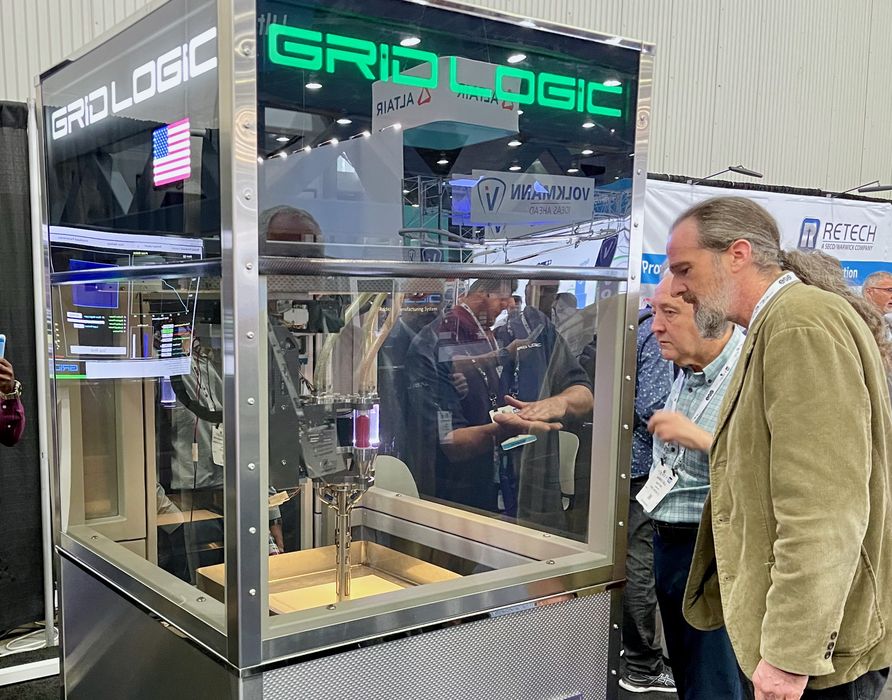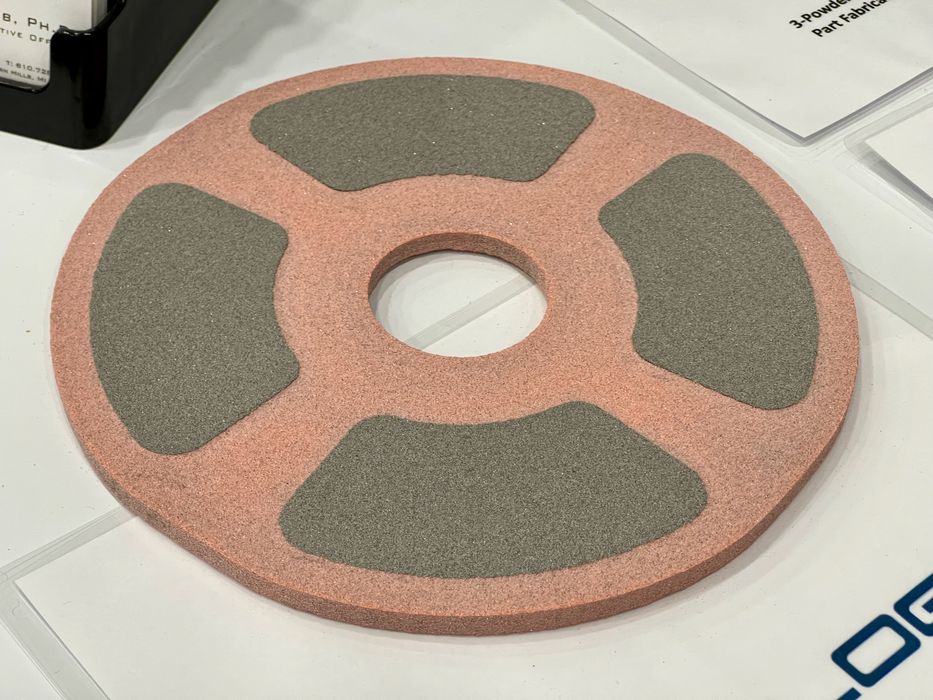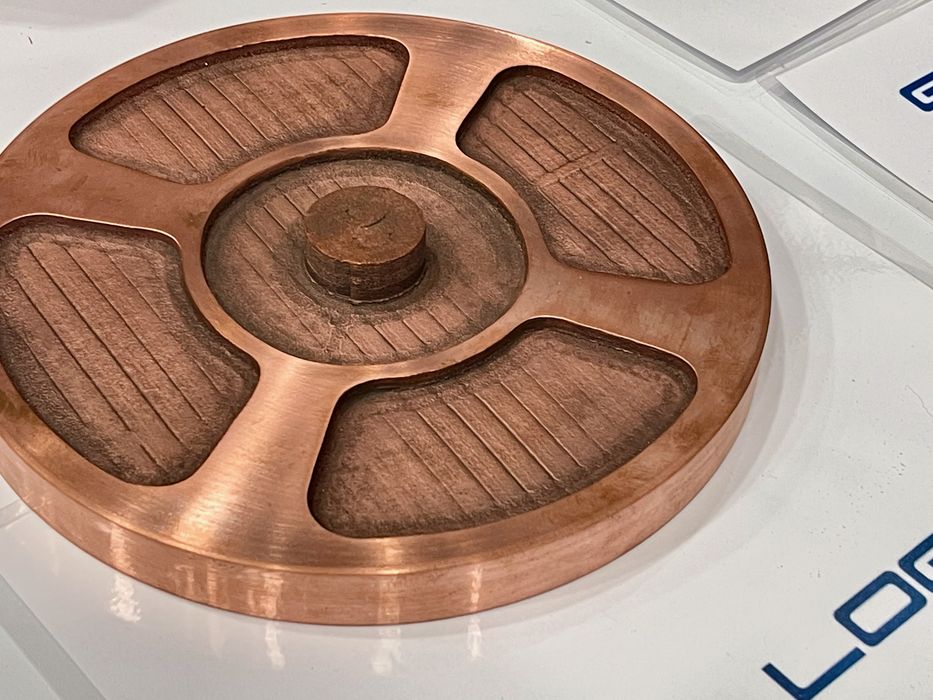
Grid Logic has developed a unique process that can 3D print metal and ceramic in the same job.
The Michigan-based company seems to be able to do something others have been unable to do: print objects containing metal and ceramic in one job. The only other experiment I’ve seen attempting to do this was from XJET, where their equipment was able to print a small object with both. As I understand, XJET had challenges with the sintering of the green parts, as temperature profiles were different for the two materials.
Grid Logic takes an entirely different approach to powder-based 3D printing. Almost all powder systems use a blade system to deposit each layer of fresh powder, and that mechanism implies use of a single material only. Grid Logic instead uses a print head that can selectively deposit powder, as you can see in this video:
You might think this approach could be slower than standard PBF processes where the entire print surface is recoated very quickly, but in fact, those approaches also require selective energy to be applied to each layer. That can take considerable time as a laser must trace each solid portion of each layer.

That’s doesn’t seem to happen with Grid Logic’s approach. Basically the support powder gradually surrounds the material powder geometry as the print proceeds. You end up with a build volume full of powder, with the metal or ceramic powder in precisely correct 3D positions to represent the printed object.
After printing completes the entire build chamber, with all powders, is placed in a sintering furnace where the metal and/or ceramic particles fuse together in the traditional manner. The support powder is designed to remain loose, and it continues to support the metal and ceramic materials during sintering.

After sintering completes, the object is taken directly from the cooled build chamber. I presume the support material can be at least partially reused.
There are a number of interesting advantages to this approach beyond the multi-material capability:
- Objects are fully supported during printing by the powder and no extra supports should be required
- Sintering takes place all at once in potentially existing equipment
- Printing larger objects should have higher throughput due to the cold process and external sintering that could take place in parallel
- By adjusting the flow rate, interior portions of layers might be filled more rapidly with material
The results are impressive. Here you can see a part that’s made from three different materials.
What’s really intriguing is the possibility of 3D printing ceramics — an insulator — with conductive metals like copper. This ability means you could print complex components for electric motors or other electrical applications.
Grid Logic said they are able to print in “three or more powders” in a single job, which is quite interesting.
My only question about this technology is how Grid Logic was able to overcome the difficulty of sintering materials with potentially different temperature profiles. Not only can materials have different sintering temperatures, but the profile to do so — heating rampup and cooldown — might be different. Because the entire build volume is subjected to the same heat profile, all materials must undergo the same process. It may be that Grid Logic has devised materials that have very similar sintering heat profiles, thus allowing the process to complete successfully.
Via Grid Logic

Interesting! Reminds me of IRO3D’s printer
https://www.fabbaloo.com/blog/2018/1/20/iro3ds-simple-3d-metal-printing-process
Except Grid Logic seems to be using a different powder “consolidation” to make the solid metal/ceramic parts